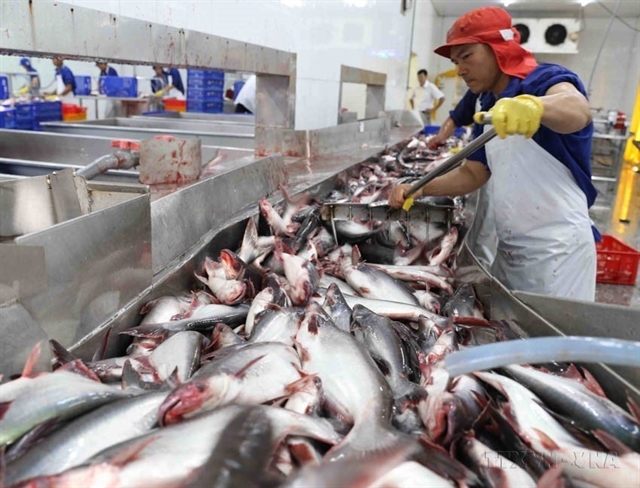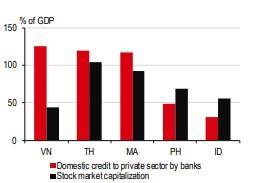Despite challenges from epidemics, natural disasters and trade barriers, Việt Nam’s agricultural sector has demonstrated strong resilience in the first eight months of the year. Positive growth figures have boosted optimism and raised expectations for further progress in the coming months. Speaking with Vietnam Economic Times, Deputy Minister of Agriculture and Environment Phùng Đức Tiến shared his assessment of the sector’s performance and prospects.

Despite facing epidemics, natural disasters and trade barriers, Việt Nam’s agricultural sector has continued to sow success in the first eight months of the year, demonstrating remarkable resilience. Positive growth across key areas has fuelled confidence and raised hopes for further gains heading into the year’s end.
Speaking with Vietnam Economic Times, Deputy Minister of Agriculture and Environment Phùng Đức Tiến assessed the sector’s performance and pointed to solid prospects for continued growth.
How has Việt Nam’s agricultural sector performed in the first eight months of 2025?
This year, the sector set a GDP growth target of 3.3–3.4 per cent. In fact, by mid-year, we had already achieved 3.74 per cent – the highest in years. This has created strong momentum for us to strive for an even higher annual growth rate of above 4 per cent, as directed by the Prime Minister, contributing significantly to the national economy.
Trade has been equally encouraging. Agricultural, forestry and fishery exports in the first eight months reached US$45.37 billion, up 12 per cent year-on-year. This is remarkable given global market turbulence, tariff changes in the United States and increasingly severe natural disasters. With strong direction from the Party, Government and National Assembly, many legal bottlenecks have been removed, paving the way for growth.
Export markets have also shifted positively. Compared to last year, shipments to Europe rose 38.7 per cent, to the Americas 10.6 per cent and to Africa doubled. We are also expanding in ASEAN markets such as the Philippines, Indonesia, Malaysia and Singapore to diversify destinations for Vietnamese produce.
On public investment, the ministry was allocated VNĐ19.53 trillion this year, with an additional VNĐ3.8 trillion later – much higher than the VNĐ15 trillion disbursed annually in previous years. By the end of August, we had disbursed 34.7 per cent of the plan, lower than the national average of 46.3 per cent but still ahead of many ministries. We are determined to complete 100 per cent disbursement by December 31.
What hurdles must be overcome for the sector to sustain its growth in the remainder of the year?
The most pressing challenge comes from the US market. Under the Marine Mammal Protection Act, Việt Nam has so far only received partial recognition, with 12 fisheries – including tuna, mackerel, squid, octopus and crustaceans – excluded. From January 1, 2026, products from these fisheries will lose access to the US, one of our key markets. We are working with the Ministry of Foreign Affairs and relevant agencies to respond and have put forward 12 solutions aimed at securing full recognition.
Natural disasters are another concern. Between now and year’s end, the East Sea (South China Sea) may see five to seven storms, with two or three forecast to make landfall in Việt Nam, mainly in the central region. Early cold air and complex terrain may also trigger flooding and urban inundation, threatening crops and aquaculture. While floods overall are expected to be low, this raises risks of water shortages for production. Accurate and timely forecasting will be crucial.
African swine fever is also spreading in 32 provinces and cities, with over 28,000 pigs culled. Some provinces such as Đồng Tháp, Vĩnh Long, Tây Ninh and Thái Nguyên report only small outbreaks, but in others – including Cao Bằng, Phú Thọ, Nghệ An, Quảng Trị and Quảng Ngãi – the disease remains widespread. This poses a real threat to our livestock growth target of 5.7 per cent.
In response, we have sent more than 70 working groups into the field this year, nearly 40 of them in July alone. Technical measures are being applied nationwide: biosecure production chains, better use of domestic feed, industrial-scale slaughtering and deep processing, as well as promoting circular economy practices in livestock. We are also pushing to restore production in areas hit by disease and natural disasters to secure food supplies during Tết.

With coffee exports already exceeding the 2030 target, what adjustments will be made to new targets?
In 2021, we set a target of $6 billion in coffee exports by 2030. Yet in 2024, exports reached $5.6 billion, and in just eight months of 2025 they stood at $6.45 billion, up 59 per cent year-on-year. We forecast full-year exports could reach $8 billion.
That said, the surge has been driven mainly by high global prices, not volume. Coffee area and output are already near their limits, so expansion is difficult. Our focus is therefore not on chasing overly high figures but on sustainable growth.
Coffee is one of six key crops under our master plan for industrial agriculture, with the group’s combined export target set at $14–16 billion by 2030. Coffee will play its part by strengthening quality and value rather than sheer volume.
We have already introduced several high-quality varieties valued at over $8,000 per tonne.
At present, Việt Nam has about 732,000 hectares under coffee, with average yields of 2.9 tonnes per hectare – and in some areas 4–5 tonnes. But issues of land, infrastructure, varieties and planning must still be addressed to further boost both productivity and quality.
Could you share the main tasks set out for the ministry in the closing months of this year?
We are committed to protecting Việt Nam’s agricultural backbone in the face of global uncertainties. In the final months of the year, our focus will be on ensuring sufficient food supplies, especially during Lunar New Year (Tết), while also maintaining strong export momentum to meet ambitious growth targets.
The ministry is working to complete the legal and policy framework and mobilise resources for major national programmes on rural development and poverty reduction. Efforts are under way to restructure the sector with an emphasis on productivity, quality and added value. At the same time, we are holding conferences and working sessions to support production and exports while reviewing pilot models for raw material zones and preparing new plans for the coming period.
Local authorities are being supported through decentralisation, administrative reform and digital transformation, alongside training in legal frameworks, meteorology and climate change adaptation. Innovation and digitalisation remain a driving force aligned with national strategies to ensure sustainable growth.
In parallel, domestic and international markets are being expanded, with special attention given to responding to new trade barriers including US tariffs. Resource management, particularly land and water, is being strengthened to build resilience against disasters and disease. Public investment disbursement is also being accelerated for key projects, with a focus on both quality and efficiency. — VNS





